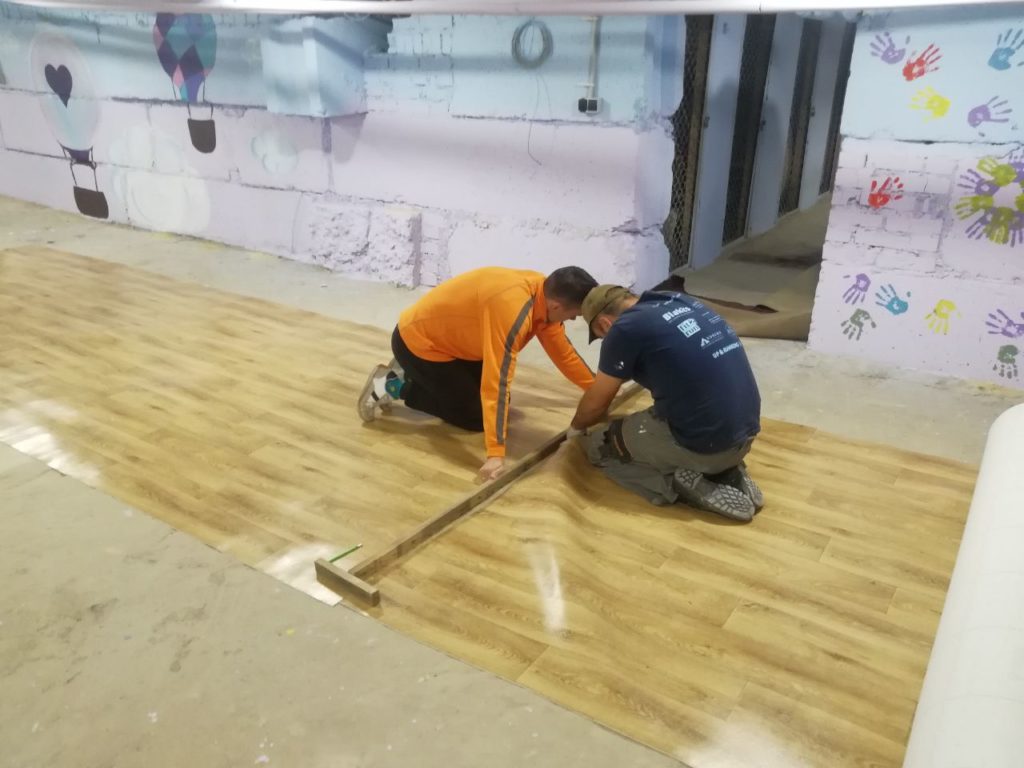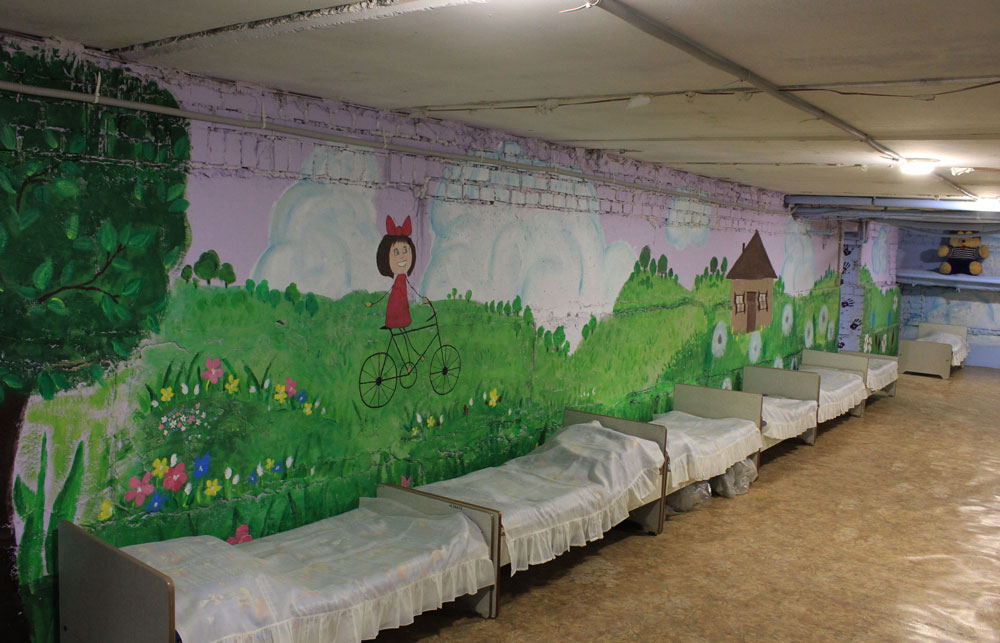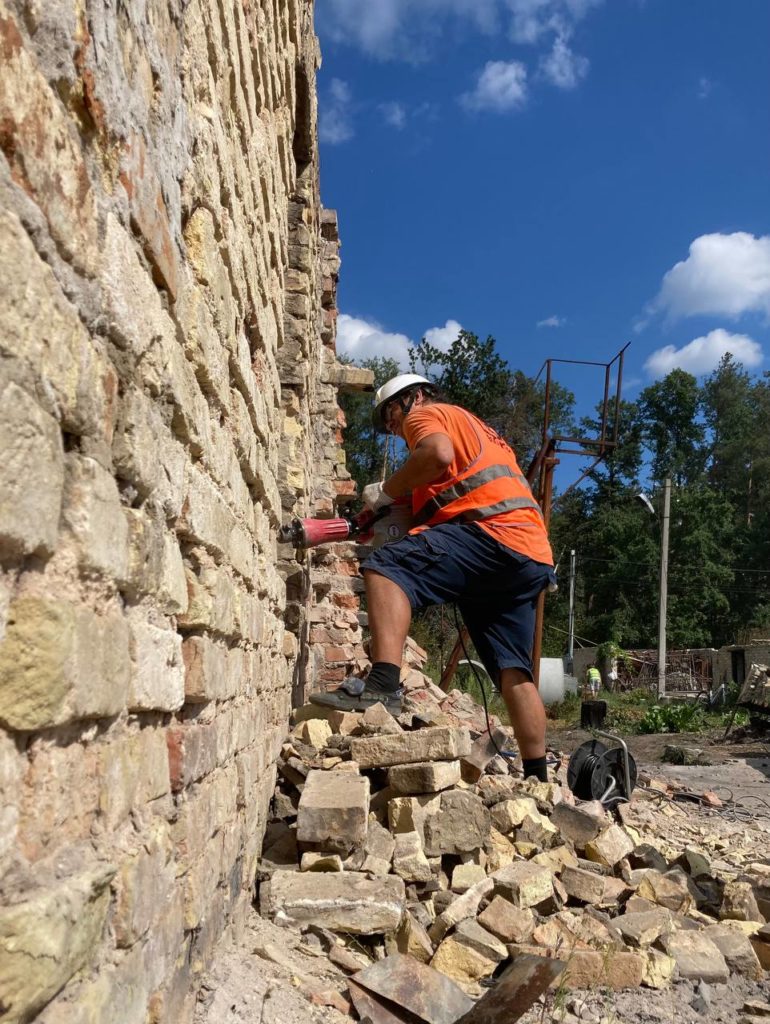B50 “Kozachok” pilot project in an article by the German media outlet TAZ
In the fall of 2023, German journalists from TAZ visited the de-occupied Kyiv region, including Bucha and Moshchun. In Bucha, they visited the Kozachok kindergarten, which launched the B50 community project Shelters. The Kozachok shelter was the first to be successfully transformed by B50 volunteers into a comfortable, bright children’s space.
Read more about the German journalists’ impressions of Bucha, Moshchun, and the work of B50 activists below.
Bucha
Bucha is called the flagship of Ukrainian recovery.
The central Vokzalna Street is considered an example of ongoing reconstruction. Today, it is difficult to recognize the apocalyptic scene that dominated the international media in April 2022.
On February 27, 2022, a 30-kilometer-long russian military column moved through Vokzalna Street toward Irpin, from where it was supposed to attack Kyiv. The plan would probably have worked if the Ukrainian army had not cut off the attackers’ path by blowing up a dam and several bridges across the Irpin River. Thus, the russian route fell on Moshchun as an alternative location.
Kozachok
“Kozachok” is the largest kindergarten in Bucha. It is located in the northern part of Vokzalna Street,
in the immediate vicinity of the documented sites of russian atrocities.
Director Tetiana Morozenko leads a “tour” of the kindergarten. When russia attacked Ukraine on February 24, 2022, Ms. Morozenko did not leave her workplace and during the first days of the invasion she housed families with children in the basement of the building.
On March 10, 2022, she evacuated with her grandchildren. They walked down Yablunska Street, where, along with Vokzalna Street, most of the civilian killings were committed, to the train station, then to Irpin. There, a car was waiting for them and took them across the Romanivskyi Bridge, where there were journalists and volunteers.
“Two of my colleagues are no longer with us,” Morozenko says in a quiet voice.
On March 20, a kindergarten employee was shot in her car, and a cook who lived in Hostomel was killed.
Ms. Tetiana leads the journalists to the basement. The walls of the corridor are decorated with fairy-tale characters. A year ago, the kindergarten celebrated its opening. The former warehouse was transformed into a bunker designed for children, painted with eco-friendly dust-repellent paint and decorated with brightly colored drawings.
B50 volunteers (Shelters project)
Children’s shelters should be decorated appropriately so that even the smallest ones are not afraid. For the B50 volunteer community, the renovation and decoration of the Kozachok kindergarten became a pilot project, after which the organization renovated the bomb shelters of six other educational institutions in Kyiv region.
When she thinks of her children, tears of gratitude come to her eyes.
“Children understand that they need to go to the bomb shelter. When the air raid alarm sounds, they calmly go down, they know the rules.”
According to her, kindergarten students enter the shelter (sometimes two or three times a day!) from two sides. They follow a clear behavioral algorithm: the children who were outside go through one door, and those who were inside go through the other. Even the smallest ones know that this is a safe place.
Almost all the children returned to Bucha with their families. Before the invasion, there were 420 children in the institution, and in the fall of 2022 there were only 200. And this year there are 328 children.






B50 volunteers (Clean Up! project)
Let’s go back to Moshchun. On Saturday, Kateryna Samantova stands on the ruins of her house. Volunteers of the B50 organization, created at the beginning of the large russian attack, have gathered here. The B50 activists are cleaning Kateryna’s yard from the ruins and are now going to dismantle the old masonry, all that remains of the young woman’s material family memory.






Volunteers join forces to work on the part of the wall they want to demolish. The Clean Up! project requires virtually no financial resources: the necessary tools are provided, and about 30 volunteers regularly take part in the work on weekends.
“We know the extent of the destruction and understand that social and vital infrastructure must be rebuilt – not only after the war is over. We do not believe that the state should do it all. This is hardly possible, and we do not expect it. Society also has to do some of this work,” says Ruslan Habdulov, head of B50.


